Lukinga Witanene Jean Paul1*, Maloba1, Kisaka3, Kasamba3, Mukalayi2, Ben Monga2, Bidilukinu3, Kashind3, Tambwe1, Shombo2, Odile2, Kyundu2, Ngalamulume2, Mutekwa2, Kyabu2, Chilundika2, Chenge1
1Ophtalmology, Senior Assistant University, Clinics of Lubumbashi Specialty, Department Ophthalmology Service, Congo
2Public Health, Senior Assistant University, Clinics of Lubumbashi Specialty, Congo
3Biology, Senior Assistant University, Clinics of Lubumbashi Specialty, Congo
*Correspondence author: Lukinga Witanene Jean Paul, Senior Assistant University, Clinics of Lubumbashi Specialty, Department Ophthalmology Service, Congo; Email: [email protected]
Published Date: 26-03-2024
Copyright© 2024 by Paul LWJ, et al. All rights reserved. This is an open access article distributed under the terms of the Creative Commons Attribution License, which permits unrestricted use, distribution, and reproduction in any medium, provided the original author and source are credited.
Abstract
Introduction: Onchocerciasis is the second leading cause of infectious blindness. This condition is serious because of its ocular complications. The sickness is caused through a Nematode specifique of I man Ochocerca Volvulus the transmission se made through a vecteur the Simulie (Mouches blacks circulant autours of the waters at current fast). We have 5 Syndroms: Cutane, Nodulaire, Oculaire, Lymphatique and Neurologique. These complications eyes him at valu the name of cecite of riviere through OMS in 1972. Our objective was to determine the epidemiological profile of onchocerciasis in the Sambwa health area.
Materials and method: We conducted a prospective cross-sectional descriptive study over a period of 5 months (01/01 to 01/05/2023). We included patients whose skin biopsy was positive for onchocerciasis, aged 10 to 90 years old and having lived more than 10 years in Sambwa. The significance threshold was 0.05%. Excel, Word and IBM SPSS 23 software were used for data entry and analysis. One hundred people were examined, 38 of whom were retained.
Results: The frequency of onchocerciasis was 38%, men predominated (57.9%, sex ratio 1.4). The average age was 64.37±11.63 years. Farmers represented 68.4%. Most patients had a stay in Sambwa of 10 to 29 years (42.2%). Ocular syndromes represented 57.6% of cases, of which bilateral cataract (31.6%) predominated, there was an association between age and ocular syndromes (p=0.00011). Blindness represented 31.6% of cases in the right eye while in the left eye mild impairment represented 26.3% of cases. Tonometry between 15.9 and 20.6 mmHg was 81.6% on the right and 76.3% on the left. In most cases the fundus was inaccessible (26.3% on the right and 21.1% on the left). In 47.4% of cases there was a refractive error.
Conclusion: Considering our results, onchocerciasis is a relatively common condition, the Sambwa health area is a Hypoendemic area.
Keywords: Onchocerciasis; Blindness; Sambwa
Introduction
Onchocerciasis is a parasitosis caused by a nematode specific to humans, Onchocerca volvulus, which is found in Africa, the Middle East, South America and Central America [1]. It is the second leading cause of infectious blindness in the world after trachoma. It is transmitted by the female blackfly in places close to fast-moving water. This condition is serious because of its ocular complications which have earned it the name river blindness [2]. The disease manifests itself through particularly disabling skin damage and eye problems which can lead to blindness, depriving patients of their ability to work in the prime of life. Deprived of their most productive population, the villages of the rich fertile valleys were the first to suffer the socio-economic repercussions of the parasitosis. To escape this scourge, people abandoned fertile lands in favor of forest areas that were less infested but barely exploitable. In the 1970s, millions of fertile hectares were deserted [3].
The World Health Organization (WHO) estimates that 120 million individuals are exposed to onchocerciasis and approximately 18 million people are infected, more than 99% of whom live in intertropical Africa, among whom 350,000 are blind [4]. The disease is endemic in 31 countries in sub-Saharan Africa, three countries in Latin America and Yemen. The WHO verified the elimination of parasite transmission in Colombia, Ecuador, Mexico and Guatemala in 2013, 2014, 2015, 2016 respectively and declared these four countries free of the disease (Fig. 1,2) [5].
Rural communities that live near turbulent waterways are the most exposed: this is where blackflies, vectors of the disease, reproduce [3].

Figure 1: Zone de santé de Kafubu.
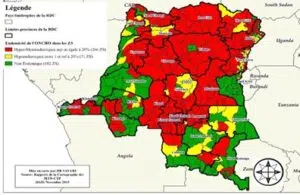
Figure 2: Cartographie épidémiologique /RDC /OMS: 2015.
Material and Methods
Type of Study, Subjects and Study Area
This is a cross-sectional descriptive study with prospective data collection which lasted from January 1 to May 1, 2023, a period of 5 months.
Our study concerned all people aged 10 to 90 living in the Sambwa health area. The cut theoretical d sample tire sure the formule of Cochran n = z² x p (1-p) / m² (1 ,96)²X 0,48 ( 1- 0,48)/ (0,05)²꓿ 3,8416 X 0,48 ꓿ 1,843968 (1- 0,48) ꓿ 0,52. 1,843968 X 0,52 ꓿ 0,95886336/0,0025 ꓿ 383.
We opted for non-probability convenience sampling following the inclusion and non-inclusion criteria. 100 people were examined during the study period.
Inclusion Criteria
Suffering from onchocerciasis; Undergo a clinical examination and additional investigations having confirmed the diagnosis of onchocerciasis; Freely agree to participate in the study; Be between 10 and 90 years old; Have lived in the Sambwa health area for more than 10 years.
- General objective:
- Define the epidemiological profile of onchocerciasis in sambwa
- Specific objectives:
- Update the prevalence of the disease in the Sambwa health area
- Establish the sociodemographic characteristics of patients
- Describe the types of ophthalmological lesions in patients
Non-Inclusion Criteria
Patients Not Suffering from Onchocerciasis
Those who have not carried out additional investigations to confirm the diagnosis of onchocerciasis; Those with onchocerciasis but who refused to participate in the study.
Research Team and Meetings with Patients
A team of seven investigators (a Senior Doctor in ophthalmology, A Biological Doctor, A General Practitioner, A laboratory technician, Two Sensitizers and A head of the local onchocerciasis branch) with well-defined tasks was responsible for collecting the data to based on a standardized survey form [3-10].
Method and Diagnosis
Complete Clinical Examination
Questioning: Identity, lifestyle, stay in Sambwa, duration of ivermectin treatment, profession, height, telephone number as well as the patient’s complaints [11-22].
Inspection: looking for skin lesions.
Palpation: to assess the number of nodules and their location.
- Parasitology Examination: In order to find the microfilariae in the skin, we performed two bloodless biopsies (Skin Smip) in each patient, each measuring 2.5 mm in diameter, at the level of two iliac crests
- Study Variables: Qualitative variables: Sex, profession, AV, tonometry, Ocular syndrome
- Quantitative Variables: Age, stay in sambwa, number of ivermectin taken, AV
- Independent variables: Age, sex, profession, stay in Sambwa, ivermectin intake
- Dependent Variable: Eye syndrome
- Input and Analysis: Excel, Word and IBM SPSS 23 software
- Univariate Analysis: Mean and standard deviation (quantitative variables) and number and percentage. (Qualitative variables)
- Bivariate Analysis: p-value < 0.05: significant; chi-square when CI=95% (ddl=1≥3.84; ddl=2 ≥ 5.9)
- Ethical Consideration: We obtained approval from the medical ethics committee of the University of Lubumbashi under number: UNILU/CEM/133/2022
Results and Discussion
38 cases of onchocerciasis out of 100 people examined: 38% of cases (Sambwa hypoendemic zone) Chenge B. 47.59%, Kapoli W. in the city of Inga: 58% [3-12].
Sociodemographic Characteristics
Age
Extremes: 43 years to 85 years, average: 64.37±11.63 years. Kapoli W: 39.12 years, IDEM Chenge B and Maertens K.: Decline in disease at extreme ages (Fig. 3,4).
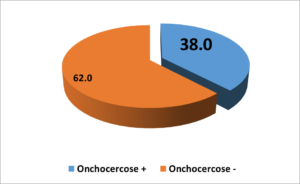
Figure 3: Prevalence of onchocerciasis in the Sambwa health area.

Figure 4: Distribution of patients according to age groups.
Gender
It appears from the figure below that the male gender predominated with 57.9% or a sex ratio of 1.38.
Sex ratio of 1.38 (Fig. 5).
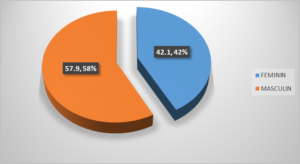
Figure 5: Distribution of patients by gender.
Masc Predominance: Chenge B; Kapoli
Size
The average height of our patients was 165.45 ± 5.49 cm, most had a height ≥ 159 cm (Fig. 6) [13].
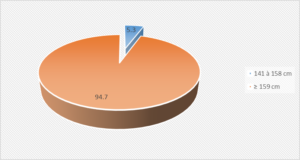
Figure 6: Distribution of patients according to Talle.
Profession (Table 1)
|
Profession |
Effective |
Percentage |
|
Farmer |
26 |
68,4 |
|
Fisherman |
5 |
13,2 |
|
Others |
7 |
18,4 |
|
Total |
38 |
100,0 |
|
Others: priest, teachers, carpenter, shoemaker; Farmers predominated with 68.4% of cases |
||
Table 1: Distribution of patients according to profession.
Stay
It appears from this table that patients aged 10 to 19 years, 20 to 29 years and 60 to 69 years were in the majority with 21.1% of cases for each group. The average length of stay was 36.26 ± 19.71 years (Table 2,3) [24-50].
|
Stay Sambwa |
Effective |
Percentage |
|
10 to 19 years old |
8 |
21,1 |
|
20 to 29 years old |
8 |
21,1 |
|
30 to 39 years old |
4 |
10,5 |
|
40 to 49 years old |
7 |
18,4 |
|
50 to 59 years old |
3 |
7,9 |
|
60 to 69 years old |
8 |
21,1 |
|
Total |
38 |
100,0 |
Table 2: Distribution of patients according to stay in Sambwa.
|
C |
Effective |
% |
Littérature |
Littérature |
|
|
Profession |
Agriculteurs Pécheurs Autres |
26 5 7 |
68,4 13,2 18,4 |
Chenge B : 52,8% agricult et pecheur Kapoli W: 44, 85 % pêcheurs et 20, agriculteurs. |
Chenge B : 52,8% agricult et pecheur Kapoli W: 44, 85 % pêcheurs et 20, 75% agriculteurs. |
|
Séjour à Sambwa |
Moy: 36,26 ± 19,71 ans. |
||||
|
Prise Ivermectine |
1 à 3 ans |
23 |
60,5 |
Table 3: Distribution of patients according to profession in Sambwa.
Types of Ophthalmological Lesions
Eye Syndromes (Fig. 7, Table 4)
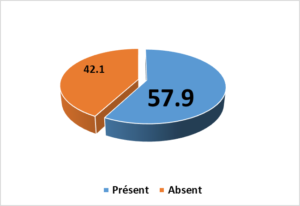
Figure 7: Above image tells us that ocular manifestations were present in 22 patients or 57.9% of cases.
|
Paramètres |
Effectif |
% |
Littérature |
|
Cataracte |
12 |
31,6 |
Chenge B: 67%; Kapoli W: 67,2%. Maertens K: 16%; Kanke N: 21%. |
|
Conjonctivite |
4 |
10,5 |
|
|
Kératite sclérosante |
4 |
10,5 |
|
|
Choriorétinite |
4 |
10,5 |
|
|
KPS |
2 |
5,3 |
|
|
Uvéite |
2 |
5,3 |
|
|
Glaucome |
2 |
5,3 |
Table 4: Distribution of patients according to disease in Sambwa.
Age and Eye Syndrome Bivariate Analysis (Table 5)
|
Age |
Syndrome oculaire |
|||
|
Non |
% |
Oui |
% |
|
|
≤64,37 |
13 |
81,3 |
4 |
18,2 |
|
>64,37 |
3 |
18,8 |
18 |
81,8 |
|
Total |
16 |
100,0 |
22 |
100,0 |
|
(p=0.00011; X²=14.9). Small p being ≤ at our significance level of 0.05, the difference is statistically significant. That is, there is an affinity between age and ocular syndrome |
||||
Table 5: eye syndrome patient details.
Profession and Eye Syndrome (Table 6)
|
Profession |
Syndrome Oculaire |
|||
|
Non |
% |
Oui |
% |
|
|
Agriculteur |
11 |
68,8 |
15 |
68,2 |
|
Pécheur |
1 |
6,3 |
4 |
18,2 |
|
Autres |
4 |
25,0 |
3 |
13,6 |
|
Total |
16 |
100,0 |
22 |
100,0 |
|
(p=0.37; X²=0.796). Small P being ≥ our significance level of 0.05, the difference is not statistically significant |
||||
Table 6: Distribution of patients with eye syndrome as per profession in Sambwa.
Conclusion
Prevalence: 38% (hypo-endemic zone) This result can be explained by the effectiveness of the fight devoted to CDTI/MMA for 11 years already. This result also illustrates the participation of the different actors (Government, WHO, APOC, PNLO, MTN) including the community itself in the CDTI/MMA process in this Sambwa home. These results allow us to talk about the control and not the elimination of Onchocerciasis in the Sambwa focus. Ages 70 to 79 years, male, farmers, Stay in Sambwa Average: 36.26 years. Ocular syndromes 57.9%, cataract +++, also: Conjunctivitis, Sclerosing keratitis and Ridley’s chorioretinitis. Visual acuity, tonometry and fundus examination were within normal range in the majority of patients. refractive errors were less frequent.
Conflict of Interests
The authors have no conflict of interest to declare.
References
- Don N Udall. Recent updates on Onchocerciasis: diagnosis and treatment. Clinical Infectious Diseases. 2007;44:53-60.
- Pierre-Marie Preux, Benoît Marin, Michel Druet-Cabanac, Guy Farnarier, Onchocerciasis and epilepsy, 1 IFR 145 GEIST, institute of tropical neurology, EA 3174 Tropical and comparative neuroepidemiology, University of Limoges, F-87025, Limoges, France.
- Anne-Sophie Lepori. Onchocerciasis: current data and new therapeutic horizon: the role of doxycycline in the treatment of onchocerciasis. Pharmaceutical Sci. 2013.
- Moussala M, Fobi G, LA BH, Bengono G, McMoli TE. Occurrence of retinal hemorrhages during treatment of onchocerciasis with ivermectin in a patient co-infected with loiasis. J Fr Ophthalmol. 2004;27(1):63-6.
- Amazigo U, Noma M, Bump J, Benton B, Liese B, Yameogo L, et al. Onchocerciasis: Disease and mortality in sub-Saharan Africa, 2nd edition. Washington (DC): World Ban. 2006:215-22.
- Afetane ETG. Epidemiology of onchocerciasis eye lesions in CDTI zones of the Littoral and Western Cameroon. End of training thesis with a view to obtaining the Specialist Diploma in Clinical Sciences option Ophthalmology. Faculty of Medicine and Biomedical Sciences, University of Yaoundé 1, Yaoundé. 2013.
- PDF Study of the impact of the onchocerciasis control program in Burkina Faso. 2020.
- WHO, River blindness: clinical trial with a new drug. Press release 1/07/2009.
- Maertens K. Ocular complications of onchocerciasis. Ann Soc Belgian Méd Trop. 1984;61;199-224.
- Chenge B. Screening and diagnosis of onchocerciasis in the Kafubu valley, DRC, University of Lubumbashi. 1999.
- Atchison DA, ThibosL N. Optical models of the human eye. Clin Exp Optom. 2016;99(2):99-106.
- Audrey N. Anatomy and physiology of the eye. Cornea donation and collection conference. Sion. 2012.
- Jaki Mekjavic P, Tipton MJ, Mekjavic IB. The eye in extreme environments. Exp Physiol. 2021;106(1):52-64.
- Sridhar MS. Anatomy of cornea and ocular surface. Indian J Ophthalmol. 2018;66(2):19-194..
- Craig B, Sigal IA, Grytz R, Hua Y, Nguyen TD, Girard MJA. Scleral structure and biomechanics. Prog Retin Eye Res. 2020;74:100773.
- Houtzagers LE, Wierenga APA, Ruys AAM, Luyten GPM, Jager MJ. Iris color and the risk of developing uveal melanoma. Int J Mol Sci. 2020;21(19):71-2.
- Iovino C, Peiretti E, Braghiroli M, Tatti F, Aloney A, Lanza M, et al. Imaging the iris vasculature: current limitations and future perspectives. Eye (London). 2022;36(5): 930-40.
- Dalal LK, Dhasmana R, Maitreya A. Cross-sectional, observational study of anterior segment parameters using anterior segment optical coherence tomography in North Indian Population. Ann Afr Med. 2017;16(3):131-5
- Sahu J, Raizada K. Pellucid marginal corneal degeneration. Stat Pearls Publish. 2023.
- Mohamed A, Nandyala S, Martinez-Enriquez E, Heilman BM, Augusteyn RC, deCastro A, et al. Isolated human crystalline lens three-dimensional shape: A comparison between Indian and European populations. Exp Eye Res. 2021;205:108481.
- Hejtmancik JF, Shiels A. Over view of the Lens. Prog Mol Biol Trans lSci. 2015;134:119-27.
- Liu Y, Wang L, Xu Y, Pang Z, MuG. The influence of the choroid on the onset and development of myopia: from perspectives of choroidal thickness and blood flow. Acta Ophthalmol. 2021;99(7):730-738.
- Bird AC, Bok D. Why the macula? Eye (Lond). 2018;32(5):858-62.
- Soumana DIARRA, Onchocerciasis thesis in Mali, National School of Medicine in Mali. 1974.
- Hissette, J. onchocerca volvulus and its ocular manifestations in the Belgian Congo. Ann Soc Belgian Trop., 1932;11:45-6.
- Robert PY, Yaya G, Darde ML. Onchocerciasis. EMC-Ophthalmology. 2012;9(3):1-7.
- Njume FN, Ghogomu SM, Shey RA, Gainkam LOT, Poelvoorde P, Humblet P, et al. Identification and characterization of the Onchocerca volvulus Excretory Secretory Prod ct Ov28 CRP, aputative GM2 activator protein. PLoS Negl Too Say. 2019;13(7):e0007591.
- Ayisi F, Sedou N, Dieunang SK, Yaya F, Tchago EF, Ndellejong CE, et al. A cross-sectional study of Simulium damnosum sensu lato breeding sites and species distribution in the Sudanese savannah, mixed savannah-forest and tropical forest regions of Cameroon. Parasitic vectors. 2022;15(1):382.
- Banla M, Tchalim S, Karabou PK, Gantin RG, Agba AI, Kére-Banla A, et al. Sustainable control of onchocerciasis: ocular pathology in onchocerciasis patients treated annually with ivermectin for 23 years: a cohort study. PLoS One. 2014;9(6):e98411.
- Cheke RA. Factors affecting onchocerciasis transmission: lessons for infection control. Expert Rev Anti Infect Ther. 2017;15(4):377-86.
- Ehrens A, Hoerauf A, Hübner MP. Eosinophilsin filarial infections: Inducers of protection or pathology? Front Immunol. 2022;13:983812.
- Hotterbeekx A, Perneel J, Vieri MK, Colebunders R, Kumar Singh S. The secretome of filarial nematodes and its role in host-parasite interactions and pathogenicity in onchocerciasis-associated epilepsy. Front Cell Infect Microbiol. 2021;11:662-766.
- Otabil KB, Gyasi SF, Awuah E, Obeng-Ofori D, Atta-Nyarko RJ, Andoh D, et al. Prevalence of onchocerciasis and associated clinical manifestations in selected hypoendemic communities in Ghana following long-term administration of ivermectin. BMC Infect Dis. 2019;19(1):431..
- Vinkeles M, Elchers NVS, Stolk WA, Murdoch ME, Pedrique B, Kloek M, et al. How do onchocerciasis-related skin and eye diseases in Africa depend on cumulative exposure to infection and mass treatment? PLoS Neg l Trop Dis., 2021;15(6):e0009489.
- Hopkins DR, Richards FO, Katabarwa M. Editorial. What is onchocerciasis control in Africa? Am J Too much Med Hyg. 2005;72:1-2.
- Lai JH, Walsh NM, Pritt BS, Sloan L, Gibson LE, Desormeau L, et al. Cutaneous manifestations of azoonotic Onchocerca species in an adult male, acquired in Nova Scotia, Canada. J Clin Microbiol. 2014; 52(5): 1768-70.
- Vinkeles Melchers NVS, Stol kWA, van Loon W, Pedrique B, Bakker R, Murdoch ME, et al. The burden of skin disease and eye disease due to onchocerciasis in countries formerly under the African Program for Onchocerciasis Control mandate for 1990, 2020 and 2030. PLoS Negl Trop Dis. 2021;15(7):e0009604.
- WHO, Final communiqué of the 11th session of the Joint Action Forum (JAF) of APOC. Paris, France; 2005 longevity. Function Ecol. 2010;24:971-83.
- Hotterbeekx A, Namale S sonko V, Oyet W, Lakwo T, Idro R. Neurological manifestations in Onchocerca volvulus infection: a review. Brain Res Bull. 2019;145:39-44.
- Burfeind KG, Kashama JK, Bora BK, Murchison CF, Ramos-Crawford AL, Nseka MT, et al. Base line characterization of epilepsy in an onchocerciasis endemic area of the Democratic Republic of Congo. Brain Res Bull. 2019;145:45-52.
- Schulz-Key H, Karam M. Periodic reproduction of Onchocerca volvulus. Parasitol. 1986;2:284-6.
- Duke BOL, Anderson J. A comparison of the lesions produced in the cornea of the rabbit eye by microfilariae of the forest and Sudan-savanna strains of Onchocerca volvulus from Cameroon I. The clinical picture. Traperiined. 1972;23:354-68.
- Garner A, Duke BOL, Anderson J. A comparison of the lesions produced in the comea of the rabbit eye by microfdlariae of the forest and Sudan-savanna strains of Oncliocercu volvulus from Cameroon II. The pathology. 2 Trapezed. 1973;24:385-96.
- Onchocerciasis, Medico-Chirurgical. Encyclopedia.
- Pryce D, Behrens R, Davidson R. Onchocerciasis in members of an expedition to Cameroon: role of advice before travel and long term follow-up. Br Med. 1992;304:1285-6.
- Taylor HR, Paque M, Munoz B, Grune BM. Impact of mass treatment of onchocerciasis with ivermectin on the transmission. Infect Sci. 1990;250:116-8.
- Shintouo CM, Ghogomu SM, Shey RA, Hotterbeekx A, Yagmur E, Mets T, et al. Tandem use of Ov MANE1 and Ov-16 ELISA increases sensitivity for diagnosis of human onchocerciasis. Life (Basel). 2021;11(12):1284.
- McLean NJ, Newkirk K, Adema CM. Canine ocular onchocerciasis: a retrospective review of diagnosis, treatment and outcomes of 16 cases in New Mexico (2011-2015). Veterinary Ophthalmol. 2017;20(4):349-56.
- Awadzi K, Opoku NO, Attah SK, Lazdins-Helds JK, Kuesel AC. Diagnosis of O volvulus infection by skin exposure to diethylcarbamazine: clinical evaluation of a patch based on transdermal delivery technology. Parasitic Vectors. 2015;8:5.
- de Almeida M, Nascimento FS, Mathison BA, Bishop H, Bradbury RS, Cama VA, et al. Duplex Real-Time PCR Assay for Clinical Differentiation of Onchocerca lupi and Onchocerca volvulus. Am J Trop Med Hyg. 2020;103(4):1556-62.
Article Type
Review Article
Publication History
Received Date: 26-02-2024
Accepted Date: 18-03-2024
Published Date: 26-03-2024
Copyright© 2024 by Paul LWJ, et al. All rights reserved. This is an open access article distributed under the terms of the Creative Commons Attribution License, which permits unrestricted use, distribution, and reproduction in any medium, provided the original author and source are credited.
Citation: Paul LWJ, et al. Epidemio-Clinical Profile of Onchocerciasis in Sambwa in the Democratic Republic of Congo. J Ophthalmol Adv Res. 2024;5(1):1-9.

Figure 1: Zone de santé de Kafubu.
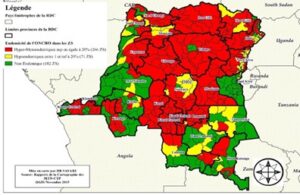
Figure 2: Cartographie épidémiologique /RDC /OMS: 2015.

Figure 3: Prevalence of onchocerciasis in the Sambwa health area.

Figure 4: Distribution of patients according to age groups.

Figure 5: Distribution of patients by gender.

Figure 6: Distribution of patients according to Talle.

Figure 7: Above image tells us that ocular manifestations were present in 22 patients or 57.9% of cases.
Profession | Effective | Percentage |
Farmer | 26 | 68,4 |
Fisherman | 5 | 13,2 |
Others | 7 | 18,4 |
Total | 38 | 100,0 |
Others: priest, teachers, carpenter, shoemaker; Farmers predominated with 68.4% of cases | ||
Table 1: Distribution of patients according to profession.
Stay Sambwa | Effective | Percentage |
10 to 19 years old | 8 | 21,1 |
20 to 29 years old | 8 | 21,1 |
30 to 39 years old | 4 | 10,5 |
40 to 49 years old | 7 | 18,4 |
50 to 59 years old | 3 | 7,9 |
60 to 69 years old | 8 | 21,1 |
Total | 38 | 100,0 |
Table 2: Distribution of patients according to stay in Sambwa.
C | Effective | % | Littérature | Littérature | |
Profession | Agriculteurs Pécheurs Autres | 26 5 7 | 68,4 13,2 18,4 | Chenge B : 52,8% agricult et pecheur Kapoli W: 44, 85 % pêcheurs et 20, agriculteurs. | Chenge B : 52,8% agricult et pecheur Kapoli W: 44, 85 % pêcheurs et 20, 75% agriculteurs. |
Séjour à Sambwa | Moy: 36,26 ± 19,71 ans. | ||||
Prise Ivermectine | 1 à 3 ans | 23 | 60,5 |
Table 3: Distribution of patients according to profession in Sambwa.
Paramètres | Effectif | % | Littérature |
Cataracte | 12 | 31,6 | Chenge B: 67%; Kapoli W: 67,2%. Maertens K: 16%; Kanke N: 21%. |
Conjonctivite | 4 | 10,5 | |
Kératite sclérosante | 4 | 10,5 | |
Choriorétinite | 4 | 10,5 | |
KPS | 2 | 5,3 | |
Uvéite | 2 | 5,3 | |
Glaucome | 2 | 5,3 |
Table 4: Distribution of patients according to disease in Sambwa.
Age | Syndrome oculaire | |||
Non | % | Oui | % | |
≤64,37 | 13 | 81,3 | 4 | 18,2 |
>64,37 | 3 | 18,8 | 18 | 81,8 |
Total | 16 | 100,0 | 22 | 100,0 |
(p=0.00011; X²=14.9). Small p being ≤ at our significance level of 0.05, the difference is statistically significant. That is, there is an affinity between age and ocular syndrome | ||||
Table 5: eye syndrome patient details.
Profession | Syndrome Oculaire | |||
Non | % | Oui | % | |
Agriculteur | 11 | 68,8 | 15 | 68,2 |
Pécheur | 1 | 6,3 | 4 | 18,2 |
Autres | 4 | 25,0 | 3 | 13,6 |
Total | 16 | 100,0 | 22 | 100,0 |
(p=0.37; X²=0.796). Small P being ≥ our significance level of 0.05, the difference is not statistically significant | ||||
Table 6: Distribution of patients with eye syndrome as per profession in Sambwa.


